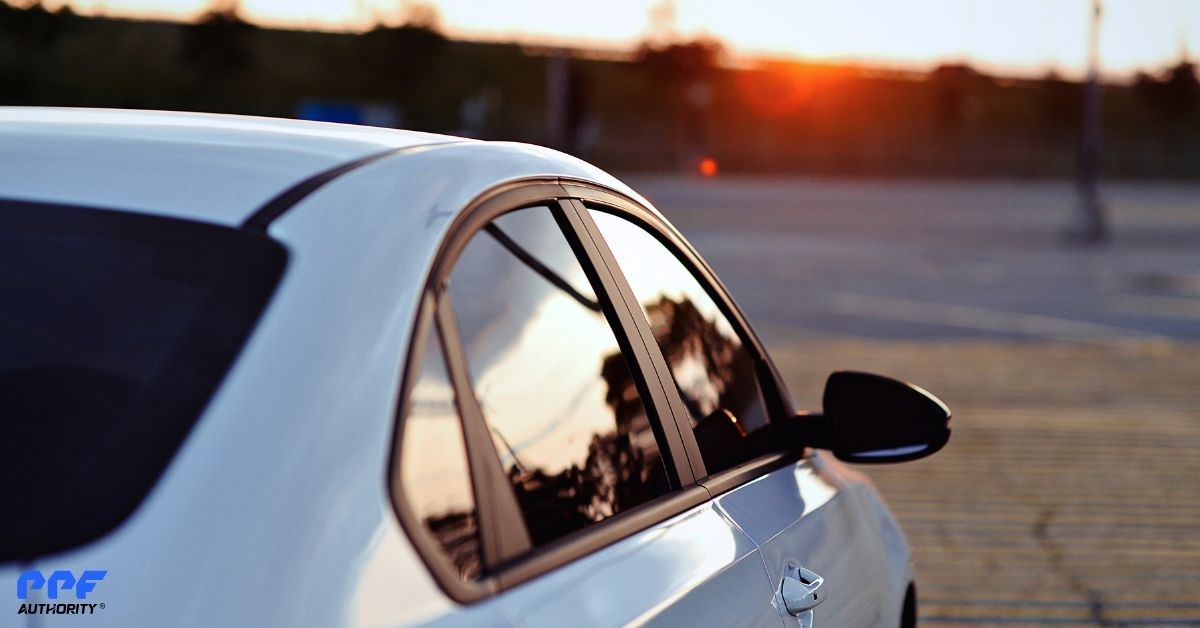Preparing your car’s surface before applying Paint Protection Film (PPF) or a ceramic coating is crucial for achieving the best results. One essential step in this preparation is using a clay bar. This simple yet effective process removes contaminants from your car’s paint, ensuring a smooth, clean surface that enhances the performance of protective products.
In this article, we’ll cover everything you need to know about clay barring a car, including why it’s important, how to do it, and the benefits it provides before applying PPF or ceramic coatings.
What Is a Clay Bar?
A clay bar is a malleable resin compound designed to remove embedded contaminants from your car’s paint. While washing removes surface dirt and grime, a clay bar works on microscopic particles that stick to the paint, such as:
- Tree sap
- Tar
- Brake dust
- Industrial fallout
- Overspray
When used correctly, a clay bar leaves the surface smooth, free of contaminants, and ready for further detailing steps like polishing, PPF application, or ceramic coating.
Why Clay Barring Is Important Before PPF or Ceramic Coating
1. Removes Contaminants for a Smooth Surface
PPF and ceramic coatings adhere best to clean, contaminant-free surfaces. Even the tiniest debris can create imperfections, causing the PPF to bubble or the ceramic coating to fail in bonding properly.
2. Prevents Damage During Application
If contaminants are left on the surface, they can cause scratches or swirls when applying PPF or polishing the car. Clay barring ensures these particles are removed before moving to the next steps.
3. Enhances Adhesion of PPF and Coatings
Both PPF and ceramic coatings rely on strong adhesion to the car’s paint. A clay-barred surface maximizes adhesion, improving the durability and effectiveness of the protection.
4. Improves Final Appearance
Embedded contaminants can cause uneven application of coatings or visible flaws beneath the PPF. By clay barring first, you achieve a flawless finish.
How to Clay Bar a Car: Step-by-Step Guide
Step 1: Gather Your Supplies
Before starting, you’ll need:
- A clay bar (medium or fine grade)
- Clay lubricant (dedicated lubricant or a quick detailer spray)
- Microfiber towels
- A bucket of water (optional, for rinsing)
Step 2: Wash Your Car
Before using the clay bar, thoroughly wash your car to remove surface dirt and grime. This prevents large particles from scratching the paint during the claying process.
Pro Tip: Use the two-bucket wash method to minimize the risk of reintroducing dirt.
Step 3: Prepare the Clay Bar
- Remove the clay bar from its packaging and knead it until it’s soft and pliable.
- Flatten the clay bar into a disc shape to provide better coverage.
Step 4: Work in Small Sections
- Choose a small area of the car to start, such as half of the hood.
- Spray the section liberally with clay lubricant to ensure the clay bar glides smoothly.
- Gently rub the clay bar back and forth in straight lines—avoid circular motions.
Pro Tip: If the clay starts to stick or drag, add more lubricant.
Step 5: Inspect and Knead the Clay
- Periodically check the clay bar for dirt and debris.
- Fold and knead the clay to expose a clean surface before continuing.
- Replace the clay bar if it becomes too dirty to avoid scratching the paint.
Step 6: Wipe and Check the Surface
- After claying a section, wipe it clean with a microfiber towel.
- Run your hand over the surface—it should feel smooth and free of rough spots.
- Repeat the process on the entire car, working in small sections.
Step 7: Final Rinse or Wash (Optional)
Once the entire car has been clayed, rinse it with water or give it a light wash to remove any remaining lubricant residue.
Common Mistakes to Avoid When Using a Clay Bar
- Using a dry clay bar: Always use plenty of lubricant to prevent scratches.
- Skipping the wash step: Clay barring a dirty car can cause more harm than good.
- Using too much pressure: Let the clay do the work—pressing too hard can scratch the paint.
- Reusing a dirty clay bar: Replace the clay bar if it becomes too contaminated.
What’s Next After Clay Barring?
Once your car has been clayed, the surface is smooth and ready for further detailing. Here’s what you should do next, depending on your goal:
1. Polishing (Optional)
For cars with scratches, swirls, or faded paint, polishing after claying helps restore shine and clarity. Polishing also ensures a smooth surface for PPF or ceramic coating.
2. Applying PPF
PPF requires a perfectly clean surface for proper adhesion. After claying (and polishing if needed), ensure the car is completely dry and free of any oils or residue before installing the film.
3. Applying Ceramic Coating
Ceramic coatings bond chemically to the paint. After claying, wipe down the car with an isopropyl alcohol (IPA) solution to remove any remaining residue. This ensures the coating adheres properly.
Benefits of Using a Clay Bar Before PPF or Ceramic Coating
- Enhanced Protection: The cleaner the surface, the better PPF and ceramic coatings can protect your car.
- Longevity: Removing contaminants helps coatings and films last longer.
- Professional Results: Proper preparation ensures a flawless, glossy finish that looks like it was done by a professional.
Conclusion
Clay barring is an essential step in preparing your car for PPF or ceramic coatings. By removing embedded contaminants, you ensure a smooth surface that enhances adhesion, improves durability, and delivers stunning results.
Whether you’re a detailing enthusiast or preparing your car for professional protection, taking the time to clay bar your vehicle is a small effort that makes a big difference. Follow the steps outlined in this guide, and you’ll set the stage for long-lasting, professional-grade protection that keeps your car looking its best for years to come.
